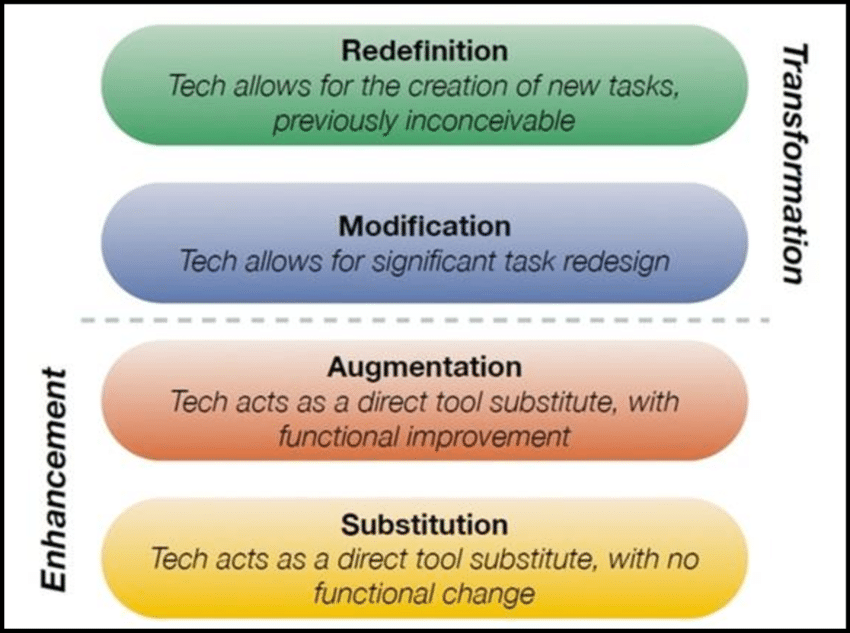
The SAMR model is a hierarchical model for selecting, applying, and evaluating the use of technology in education. Moreover, The model can help educators think about the role of technology in supporting learning. I will break down the four letters SAMR to analyze the benefits of each. First, “substitution” and “augmentation” are word processing software or tools that expose students to digital information. These tools can make functional improvements to learning tasks but have not yet touched upon the essence of the task.
On the other hand, “Modification” and “redefinition” are different areas than “substitution” and “augmentation”. Technology changes learning tasks in complex ways, or redefines existing tasks, resulting in previously unimagined learning outcomes. Learning can be dramatically changed through personalized learning techniques. Google Docs, for example, allows multiple students to complete team projects or assignments at the same time, which not only saves students time but also makes their learning process easier.
References:
Erica R. Hamilton. The Substitution Augmentation Modification Redefinition
(SAMR) Model: a Critical Review and Suggestions for its use. 2016, https://linkspringercom.ezproxy.library.uvic.ca/content/pdf/10.1007/s11528-016-0091-y.pdf
Hi, Zhiwen. Thank you for your summary of the SAMR model this week. And the example of Google Docs is very new to me! You mentioned that Google Docs allows multiple students to complete a project at the same time. I did not expect this to be an example of SAMR. Indeed, different people have different views on a subject, then the combination of such divergent thinking can form a mind map.